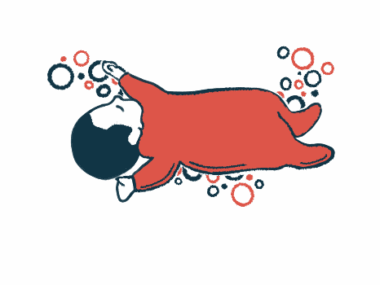Woman with HFE mutations gets PCT, sarcoidosis diagnosis
Phlebotomy, UV protection manage rare combination of conditions, per report
Written by |

A woman in her 60s with fragile skin and blistering lesions on sun-exposed areas was diagnosed with porphyria cutanea tarda (PCT), the most common form of porphyria, alongside cutaneous sarcoidosis, a rare inflammatory skin condition, according to a case study from Canada.
The woman was found to carry two different mutations in the HFE gene, one on each copy, which are known to increase the risk of developing PCT.
“The co-occurrence of PCT, HFE mutations, and sarcoidosis is previously described, albeit not commonly reported,” the researchers wrote. “To the best of our knowledge, this is the first described case of cutaneous sarcoidosis and PCT.”
The case study, “Sporadic Porphyria Cutanea Tarda, Cutaneous Sarcoidosis, and Compound Heterozygosity of HFE Mutations Cys282 Tyr and His63Asp—A Case Report,” was published in eJHaem.
PCT is caused by factors that impair the function of uroporphyrinogen decarboxylase (UROD), an enzyme that’s essential for the production of heme, a molecule needed for oxygen transport in red blood cells. When UROD doesn’t work as it should, porphyrins, chemical compounds involved in the heme production pathway, build up primarily in the liver, then circulate in the bloodstream and are excreted in the urine. This accumulation makes the skin extremely sensitive to sunlight and causes porphyria symptoms such as blistering and skin changes.
PCT, sarcoidosis diagnosis
In most cases, PCT is acquired rather than inherited. It can be triggered by various risk factors, such as alcohol and tobacco use, estrogen, fatty liver or hepatic steatosis, certain diseases or medications, and mutations in the HFE gene that disrupt iron regulation.
The woman whose case was described in the study went to the doctor with a six-year history of fragile skin and blistering lesions on sun-exposed parts of her body, especially her hands. She also had itching, skin darkening, unusual facial hair growth, and dark, reddish-brown urine.
Her diagnosis of PCT had been confirmed two years earlier through a skin biopsy and urine porphyrin testing. In addition to PCT, she had a confirmed cutaneous sarcoidosis diagnosis. Sarcoidosis is a rare, inflammatory condition in which the body’s immune system forms small clumps of cells, or granulomas, in the skin. The woman’s medical history also included high blood pressure, an underactive thyroid or hypothyroidism, inner ear problems, and obesity.
At the time, she was being treated with high blood pressure medications, including candesartan, hydrochlorothiazide, and hydralazine, as well as levothyroxine to manage her hypothyroidism.
She was not using estrogen or alcohol, both known triggers for PCT. However, she had two siblings with porphyria and another with hyperferritinemia (elevated levels of an iron-storing protein in the blood), suggesting a possible genetic predisposition.
Lab tests showed elevations in hemoglobin (the protein in red blood cells that carries oxygen), hematocrit (the proportion of red blood cells in the blood), and significantly high levels of porphyrins in the urine. A hand skin biopsy also identified features typical of PCT.
An abdominal ultrasound revealed liver fat accumulation, while a chest CT scan showed no signs of lung involvement from sarcoidosis, or pulmonary sarcoidosis.
Given her family history and occasional abdominal pain, genetic testing was conducted to rule out acute hepatic porphyria.
While no mutations associated with inherited forms of porphyria were found, the test revealed the presence of two mutations in each copy of HFE gene, one known as C282Y and the other as H63D.
These mutations are associated with hereditary hemochromatosis, a condition that causes the body to absorb too much iron. Excess iron is thought to worsen PCT by impairing UROD’s function, either through iron buildup in the liver or immune-related mechanisms not directly related to iron.
“The biological underpinnings of PCT susceptibility factors and their effect on the heme biosynthetic pathway are not well understood,” the researchers wrote. “While HFE variants and hereditary hemochromatosis are well described in association with PCT, there are many other susceptibility factors such as infections, medications, liver disease, and possibly, sarcoidosis, that may contribute to [disease initiation and development] through iron-independent immunological mechanisms.”
The patient was managed with therapeutic bloodletting (phlebotomy) to remove excess iron, along with ultraviolet protection and annual abdominal ultrasounds to monitor liver health. Because her sarcoidosis did not involve major organs or cause severe skin symptoms, no specific treatment was given. Her blistering lesions improved with iron-reducing therapy and supportive care.






